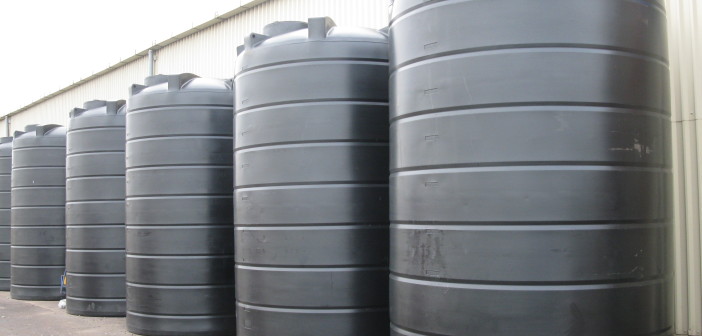Water containment comes in all shapes, sizes and colors. They are available in both plastic and steel. Containers can be used for many things. Rainwater can be stored in 55-gallon drums to water plants and gardens. Containers can be used to store water for livestock in rural areas. Water can be stored in large capacity containers to combat fires where water is in short supply due to drought.
According to National Tank Outlet, these containers can find useful purposes both above ground and below ground. They said, “Depending on what type of container is purchased plays a huge role in where it is located. Some people might want containers hidden as an emergency resource in the event of a disaster. Others might have water storage containers for use where they live because it is a drought prone area.” Municipalities use water containers to store extra water supplies for those times when rainfall is scarce.
Underground Steel Tanks
These containers can be used for the storage of industrial wastewater for treatment. They are used for septic storage use from agriculture and livestock liquid waste. The tanks can be used for storing non-potable water and other liquid waste materials in underground locations.
Potable Steel Tanks
These water storage containers are specifically designed to store safe drinking water. They are used at resorts, campgrounds, rest areas, prisons and other areas where water is needed but water lines might not be available. The tanks have a specially lined interior design that allows water to be efficiently stored for long periods of time without the threat of contamination.
Steel Rainwater Harvesting Tanks
These containers hold collected rainwater for reuse. They are used for irrigation systems, sprinklers and agricultural related purposes. Many areas use these containers because of severe drought conditions that frequently happen. They provide businesses long-term solutions for water storage needs. Additional information on rainwater collection can be found here.
Advantages Of Steel Tanks vs. Plastic Tanks
Steel containers don’t promote the growth of algae and microbes that thrive from the exposure to sunlight. Sunlight can degrade plastic over time making the plastic have a yellowish color. The water may taste flat or have a plastic smell to it from the continuous gassing effect of the plastic material over a long period of time. Darker colored plastic containers eliminate the ability of sunlight to penetrate through the container into the water supply.
Open Water Tanks
These containers use a gravity fed system to allow additional water supplies to reach tenants where the water pressure might be low. Typically, the open water tanks are on roofs of buildings such as old apartment buildings to help supply low pressure to people living there. Water is pumped to the storage container and distributed through water lines to wherever it might be needed in the building. The added storage of water feeding downward through the lines drastically improves water flow throughout the buildings water lines.
Plastic Emergency Use Tanks
People who prep for future events such as disasters use these containers. It could be emergency preparedness by individuals or communities in rural areas. The tanks might be large enough to hold 1000 gallons or more of drinking water. Usually, these containers are filled and hidden away for use when an emergency happens or might happen.
Some individuals might choose much larger containers to hold water supplies up to 50,000 gallons and purchase steel tanks instead. Where livestock on farms is a concern, it would be an ideal area for containers to be used in that range of size.
More information is available about cleaning and disinfecting tanks at CDC.
Emergency Vehicle Water Storage Tanks
Many vehicles are equipped with water storage tanks to help fight fires out in the field. Whether privately owned or used by the government, these emergency vehicles respond to areas where they are needed in a fire disaster.
Other uses for vehicles with water tanks are to supply rural areas where drinking water is desperately needed due to weather related emergency or other natural disasters. They are used in campgrounds and resorts to re-supply underground tanks that rely on them because it is the only water supply available.




